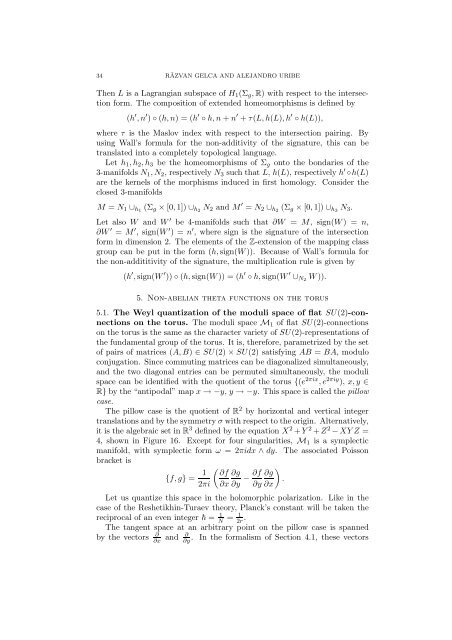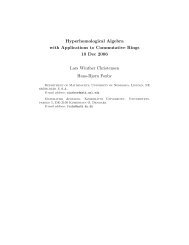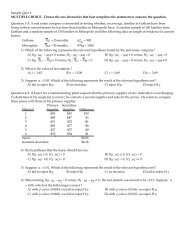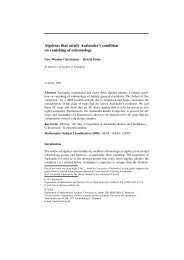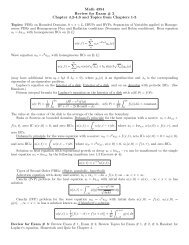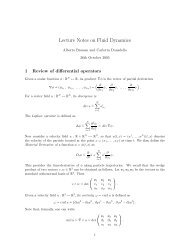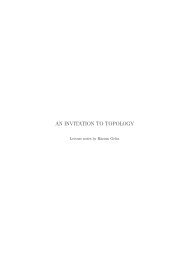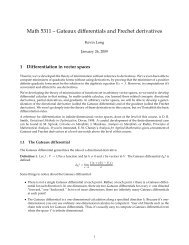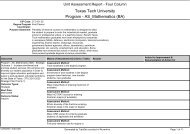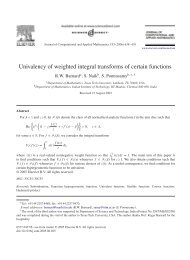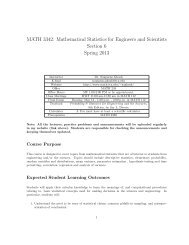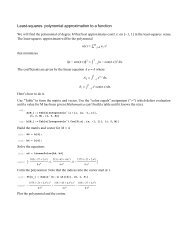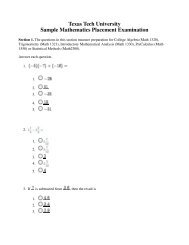QUANTUM MECHANICS AND NON-ABELIAN THETA FUNCTIONS ...
QUANTUM MECHANICS AND NON-ABELIAN THETA FUNCTIONS ...
QUANTUM MECHANICS AND NON-ABELIAN THETA FUNCTIONS ...
Create successful ePaper yourself
Turn your PDF publications into a flip-book with our unique Google optimized e-Paper software.
34RĂZVAN GELCA <strong>AND</strong> ALEJ<strong>AND</strong>RO URIBEThen L is a Lagrangian subspace of H 1 (Σ g , R) with respect to the intersectionform. The composition of extended homeomorphisms is defined by(h ′ ,n ′ ) ◦ (h,n) = (h ′ ◦ h,n + n ′ + τ(L,h(L),h ′ ◦ h(L)),where τ is the Maslov index with respect to the intersection pairing. Byusing Wall’s formula for the non-additivity of the signature, this can betranslated into a completely topological language.Let h 1 ,h 2 ,h 3 be the homeomorphisms of Σ g onto the bondaries of the3-manifolds N 1 ,N 2 , respectively N 3 such that L, h(L), respectively h ′ ◦h(L)are the kernels of the morphisms induced in first homology. Consider theclosed 3-manifoldsM = N 1 ∪ h1 (Σ g × [0,1]) ∪ h2 N 2 and M ′ = N 2 ∪ h2 (Σ g × [0,1]) ∪ h3 N 3 .Let also W and W ′ be 4-manifolds such that ∂W = M, sign(W) = n,∂W ′ = M ′ , sign(W ′ ) = n ′ , where sign is the signature of the intersectionform in dimension 2. The elements of the Z-extension of the mapping classgroup can be put in the form (h,sign(W)). Because of Wall’s formula forthe non-addititivity of the signature, the multiplication rule is given by(h ′ ,sign(W ′ )) ◦ (h,sign(W)) = (h ′ ◦ h,sign(W ′ ∪ N2 W)).5. Non-abelian theta functions on the torus5.1. The Weyl quantization of the moduli space of flat SU(2)-connectionson the torus. The moduli space M 1 of flat SU(2)-connectionson the torus is the same as the character variety of SU(2)-representations ofthe fundamental group of the torus. It is, therefore, parametrized by the setof pairs of matrices (A,B) ∈ SU(2) × SU(2) satisfying AB = BA, moduloconjugation. Since commuting matrices can be diagonalized simultaneously,and the two diagonal entries can be permuted simultaneously, the modulispace can be identified with the quotient of the torus {(e 2πix ,e 2πiy ), x,y ∈R} by the “antipodal” map x → −y, y → −y. This space is called the pillowcase.The pillow case is the quotient of R 2 by horizontal and vertical integertranslations and by the symmetry σ with respect to the origin. Alternatively,it is the algebraic set in R 3 defined by the equation X 2 +Y 2 +Z 2 −XY Z =4, shown in Figure 16. Except for four singularities, M 1 is a symplecticmanifold, with symplectic form ω = 2πidx ∧ dy. The associated Poissonbracket is{f,g} = 1 ( ∂f ∂g2πi ∂x ∂y − ∂f∂y)∂g.∂xLet us quantize this space in the holomorphic polarization. Like in thecase of the Reshetikhin-Turaev theory, Planck’s constant will be taken thereciprocal of an even integer = 1 N = 1 2r .The tangent space at an arbitrary point on the pillow case is spannedby the vectors ∂∂x and ∂∂y. In the formalism of Section 4.1, these vectors


